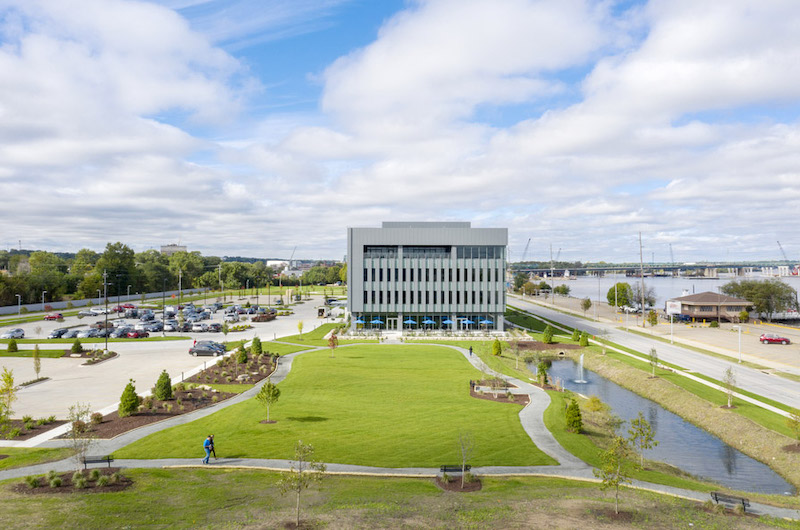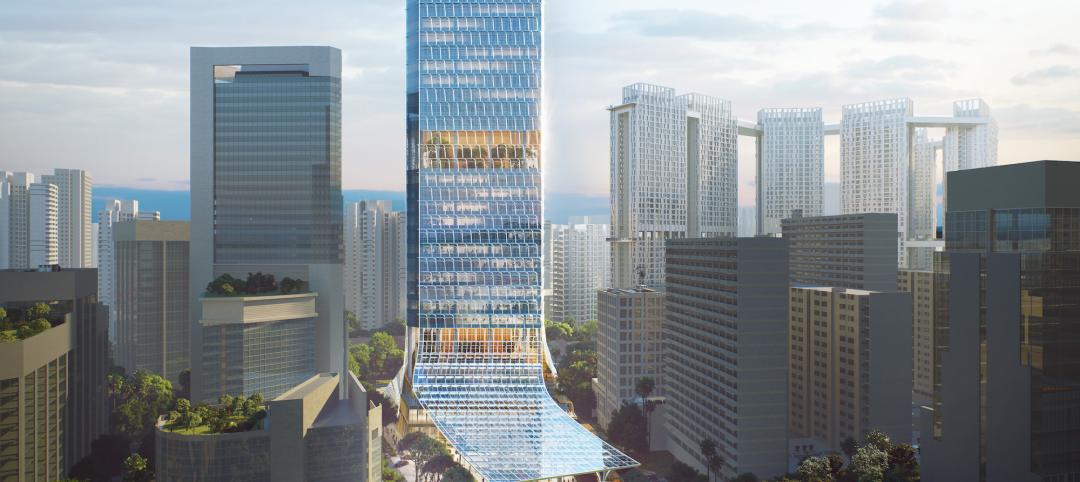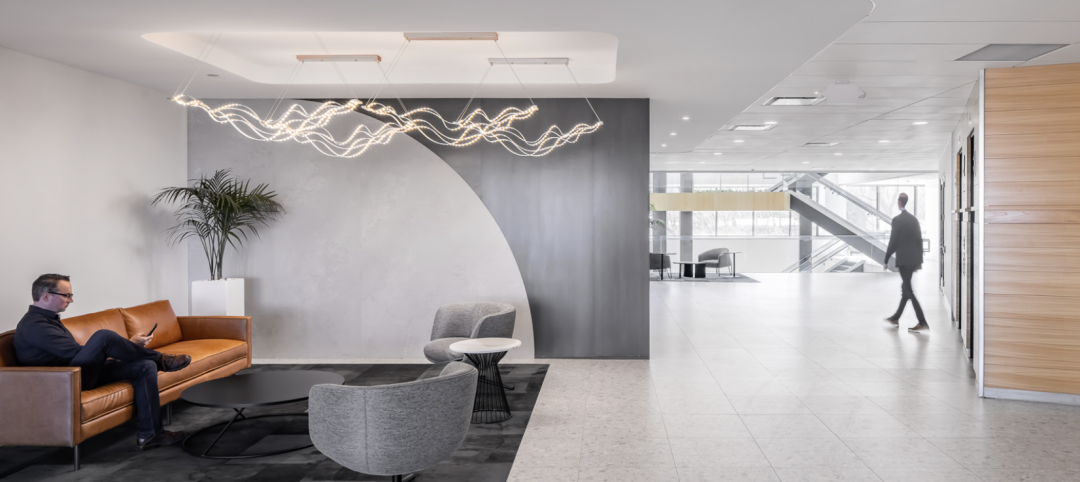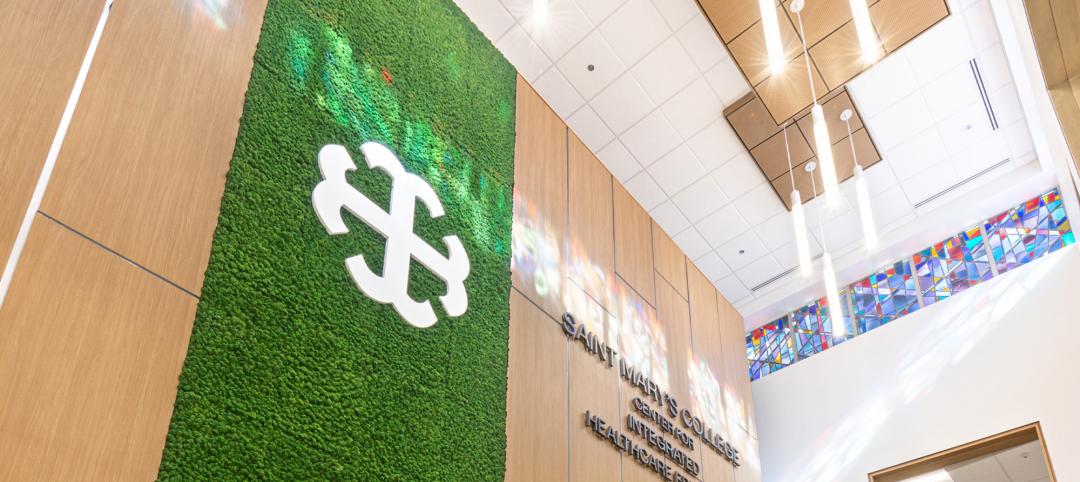You’ve made the jump. You took the risk and have officially set out alone, swimming against the current in an overwhelming sea of large corporations. Your ideas get legs, even take flight, and your workload begins to demand an ever-growing crop of new talent. You beef up your compensation offerings and benefits packages. You move into a new space and add a slew of amenities to attract the best and brightest in the industry. What could possibly go wrong?
For companies experiencing rapid growth, work-life balance can be a challenge to maintain, yet it remains a vital aspect of a healthy work environment.
There is an opportunity to create social opportunities within the workplace, while offering simple gestures that allow employees to more efficiently accomplish day-to-day life, customized to each individual.
Our workplace team at LEO A DALY aims to shape physical environments to allow these features to thrive. However, at the end of the day, many amenities are truly operational in nature and rely heavily on an owner’s long-term commitment.
As you set out on your quest to provide every available amenity to your employees, it can be overwhelming. We recommend prioritizing your desired amenities and considering the following principles to help employees maintain a healthy balance.
Redefine the traditional view of work-life balance
We spend a lot of time in our jobs. The 40-hour work week no longer exists. In fact, in today’s workplace, there is no longer such a thing as “after work.” Employees’ lives can exist largely within the office, or they can work remotely from home with little-to-no direct interaction with their co-workers.
Definitions of work-life balance are numerous and vary widely. This balance has been traditionally perceived as having equal time committed to work, family, hobbies, outside social events, etc. – doing whatever it takes to accomplish all things for all people. However, this balance is truly individualized. It is driven by each person and will vary over time, sometimes every day. The right balance for one employee will seem absurd to someone else. The right balance today may be different tomorrow.
Most importantly, striking that perfect balance has undeniable health benefits. Overly stressed employees can become susceptible to workplace burnout, increasing the potential for disengagement, errors, accidents, sick leave and eventually high turnover rates. To combat stress, service-based amenities can help employees reduce demands on their time. Social amenities can brighten their days, providing interaction and engagement. When employees feel balanced (by their own definition), they will be happy, healthy, productive and a shining example to recruit new top talent.
Understand the difference between service-based and social amenities
Service-based amenities make life a little easier. They are conveniences that would otherwise take time away from our day. They allow life to happen outside the workplace.
- During site selection, plan for access to public transportation.
- Coordinate internal ridesharing programs.
- Offer powerful Wi-Fi for untethered collaborative working.
- Strategically arrange healthy food selections for breakfast, lunch and dinner.
- Provide reusable flatware, plates and water bottles with filling stations throughout.
- Provide a staff concierge service for mail service and package delivery/reception, dry cleaning, last-minute grocery needs, airport travel.
- Staff a full-time handyman to complete odds and ends at employees’ homes, reducing the stress of at-home coordination.
- Set aside space for dedicated lactation rooms for new mothers and quiet rooms for private matters, no questions asked.
- Investigate childcare options: internal daycares, subsidizing nearby daycare centers.
- Provide temporary pop-up specialties: barber, hair stylist, clinic/health assessment services.
Social amenities are engaging, bringing people together to create a vibrant work culture. They activate interaction between employees, and potentially invite the community to join the experience. Employees engaged in their community only strengthen your culture. They create life inside the workplace.
- Activate common break areas with nearby circulation and seating variety.
- Provide coffee and other beverage options in common spaces to start the morning.
- Boost Wi-Fi capacity, and allow connectivity to personal devices.
- Create large multi-purpose spaces and encourage use by community groups.
- Integrate spaces for activity: gym equipment, group fitness, multi-purpose space, outdoor walking trails.
- Offer access to an on-site staff trainer and instructed classes.
- Provide locker rooms with showers and changing facilities.
- Create recreation spaces with video games, simulators, pool tables, foosball, etc.
- Incorporate a theater room.
- Provide access to snacks and beverages, alcoholic and otherwise.
- Partner with local retailers for ground-level access to coffee shops, boutiques, eateries, etc.
Designing for balance
You know your people, and you are the subject matter expert as we begin our work. LEO A DALY’s workplace team has the privilege to listen and learn about a new process with each new client. Direct collaboration with you leads to design for the right variety of service-based and social amenities, customized to your specific workplace culture. We craft experiences and curated views of workplace features. We create spaces that are flexible to adapt to new trends.
As you grow, be smart and prioritize the conveniences you offer, find the right mix of service and social perks to fit your culture and encourage employees to break the mold as they find their perfectly customized work-life balance. Healthy employees make for healthy companies.
Related Stories
Market Data | Aug 1, 2023
Nonresidential construction spending increases slightly in June
National nonresidential construction spending increased 0.1% in June, according to an Associated Builders and Contractors analysis of data published today by the U.S. Census Bureau. Spending is up 18% over the past 12 months. On a seasonally adjusted annualized basis, nonresidential spending totaled $1.07 trillion in June.
Office Buildings | Aug 1, 2023
Creating a nurturing environment: The value of a mother’s room in the workplace
Since becoming an architect, Rebecca Martin of Design Collaborative has drawn a mother’s room into numerous projects. But it wasn't until she became a mom that she fully appreciated their importance in the workspace.
Adaptive Reuse | Jul 27, 2023
Number of U.S. adaptive reuse projects jumps to 122,000 from 77,000
The number of adaptive reuse projects in the pipeline grew to a record 122,000 in 2023 from 77,000 registered last year, according to RentCafe’s annual Adaptive Reuse Report. Of the 122,000 apartments currently undergoing conversion, 45,000 are the result of office repurposing, representing 37% of the total, followed by hotels (23% of future projects).
High-rise Construction | Jul 26, 2023
A 33-story Singapore tower aims to reimagine work with restorative, outdoor spaces
Architecture firm NBBJ has unveiled design details for Keppel South Central, a commercial tower in Singapore. The project, which is slated for completion in late 2024, will transform the original Keppel Towers into a 33-story, energy-efficient building that aims to reimagine work by providing restorative spaces and connections to the outdoors.
Multifamily Housing | Jul 25, 2023
San Francisco seeks proposals for adaptive reuse of underutilized downtown office buildings
The City of San Francisco released a Request For Interest to identify office building conversions that city officials could help expedite with zoning changes, regulatory measures, and financial incentives.
Market Data | Jul 24, 2023
Leading economists call for 2% increase in building construction spending in 2024
Following a 19.7% surge in spending for commercial, institutional, and industrial buildings in 2023, leading construction industry economists expect spending growth to come back to earth in 2024, according to the July 2023 AIA Consensus Construction Forecast Panel.
Office Buildings | Jul 24, 2023
A twist on office conversions maximizes leasable space
A recent NELSON Worldwide project is made more suitable for multiple workplace tenants.
Biophilic Design | Jul 20, 2023
Transform your work environment with biophilic design
Lauren Elliott, Director of Interior Design, Design Collaborative, shares various ways biophilic design elements can be incorporated into the office space.
Office Buildings | Jul 20, 2023
The co-worker as the new office amenity
Incentivizing, rather than mandating the return to the office, is the key to bringing back happy employees that want to work from the office. Spaces that are designed and curated for human-centric experiences will attract employees back into the workplace, and in turn, make office buildings thrive once again. Perkins&Will’s Wyatt Frantom offers a macro to micro view of the office market and the impact of employees on the future of work.
Codes and Standards | Jul 19, 2023
Office leasing in major markets by financial services firms rebounds to pre-pandemic norms
Though the pandemic led to reductions in office leasing by financial services firms in gateway markets, a recent report by JLL found a notable leasing resurgence by those firms.

















